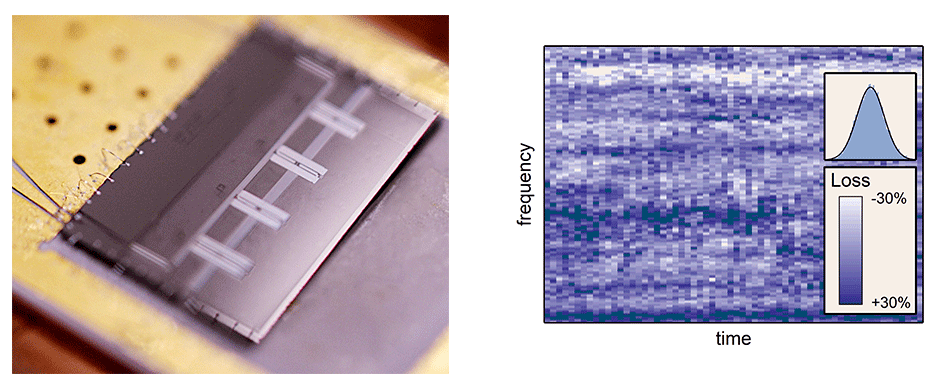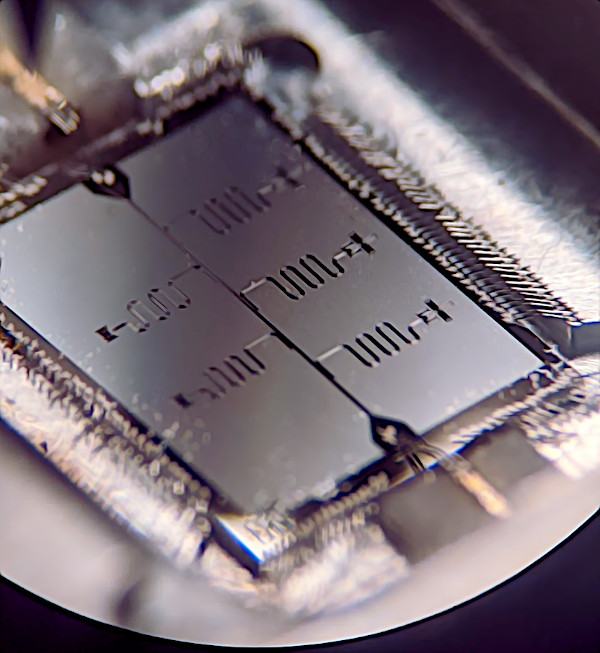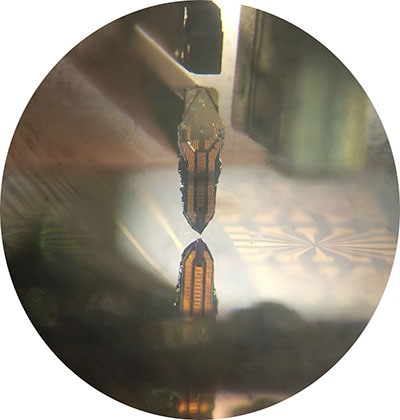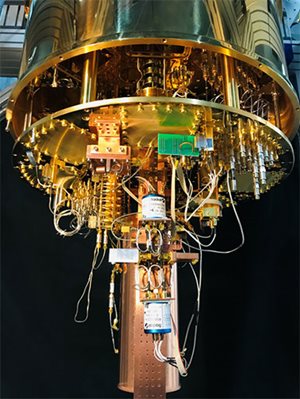Metrology and instrumentation for superconducting quantum circuits
In the superconducting quantum circuits area superconducting components such as qubits, Josephson junctions, micro-resonators and quantum phase slip junctions are used to create electronic circuits that can manipulate quantum information.
The strength of superconducting technology is its scalability; it builds on many decades of experience in fabricating microelectronic circuits. The field has seen huge progress in the past 15 years and superconducting circuits now form an essential platform for quantum computing, quantum sensing and metrology. To further take advantage of this emerging field we now need to develop metrology and instrumentation specifically tailored to calibrate and understand these devices in detail.
At NPL we are developing the tools and measurement techniques needed to support the future development of superconducting quantum computers and circuits.
Contact our quantum team
Metrology of materials for superconducting quantum devices and circuits

Left: chip with superconducting resonators used to probe the properties of defects
Right: Mapping the changes in device decoherence over time and frequency
Defects and impurities at interfaces and surfaces are obstacles to further scaling up of superconducting quantum computers, and in general they significantly limit the performance of quantum sensors and devices. These defects - generally known as two-level systems (TLS) - are not only a source of decoherence but also cause the parameters of qubits to change over time making calibration and tune-up difficult. In order to be able to eliminate the TLS we first have to identify them and understand their nature.
At NPL we have developed a range of new measurement techniques for studying TLS. These include direct measurements of TLS-induced noise and microwave spectroscopy, as well as micro-electron spin resonance (ESR) which allows us to detect the chemical fingerprint of impurities and defects. These methods can be applied to a wide variety of circuits and will become increasingly important as complexity increases and multi-layer technology is more widely used.
Metrology of superconducting qubits

Five superconducting qubits
on a chip made from aluminium
Superconducting qubits are the main building blocks of quantum computers and have been studied for more than 20 years. As their performance has increased so have the demands on the measurement methods used. As we continue to scale up quantum computers, we will need quantitative and reproducible methods for characterising qubits and circuits.
At NPL we are developing standardised methods for measuring qubits and analysing their parameters. The goal is to find standardised metrics that can be used, for example, to optimise fabrication processes.

The tip of the NSMM is scanned over the surface
of a sample superconducting quantum chip
Novel instrumentation for metrology at millikelvin temperatures
Superconducting quantum circuits are operated at temperatures just above absolute zero.
By using modern cryogenics we can operate quantum circuits at temperatures as low as 10mK. Unfortunately, this often means that we can no longer use conventional measurement instruments to characterise them. NPL is therefore developing new instrumentation that can operate under the same challenging conditions as quantum circuits. This work is done is close collaboration with the superconducting electronics area.
Near field scanning microwave microscope
Scanning probe techniques are very important for the development of microelectronics and are routinely used to image and study conventional microelectronic circuits. But since superconducting quantum circuits are operated at millikelvin one can only get limited information by studying them at room temperature. Additionally, the circuits are operated at high (gigahertz) frequencies so we need an instrument which can spatially map the response at these microwave frequencies.
At NPL we have therefore developed a near-field scanning microwave microscope (NSMM) that is operated at 10 mK and can simultaneously image and map the frequency response of a sample with nanometre resolution. Importantly, this allows us study ’live’ superconducting circuits and qubits.
The goal of this work is to develop an instrument which can be used not only to image circuits but also to locate any defects/impurities which are detrimental to their performance. The use of the NSMM will make it easier to optimise the performance of large-scale quantum circuits.
Absolute power quantum sensor

The APQS can be plugged into the line at a point of interest
One of the most important instruments when working with microwave electronics is the power meter which is used to determine the level of power at a point in a circuit. Conventional power meters cannot be used with circuits cooled to millikelvin temperatures. Some measurements can be done at room temperature before the circuit is cooled down, but the microwave losses of components and cables change dramatically as they are cooled resulting in large measurement errors.
At NPL we are developing an Absolute Power Quantum Sensor (APQS). The sensor, which is based upon superconducting qubit technology, is designed to be installed next to or incorporated into the circuit of interest. The APQS is ‘absolute’, meaning it does not need to be calibrated against an external reference. It operates in a broad frequency band at low temperatures (mK) and does not disturb the microwave transmission line when not in use. This makes it ideal for use in for example system characterisation of superconducting quantum computers or microwave components at low temperatures.
Superconducting circuits for fundamental metrology

Dilution refrigerator used to cool
samples down to mK temperatures
The rapid progress in fabrication and characterisation of superconducting materials and circuits means that we are now able to design, build and test novel superconducting devices in a way that would have been impossible just a few years ago.
At NPL we are using our expertise and state-of-the art facilities to explore a range of new superconducting devices that one day could find use in fundamental metrology.
Coherent quantum phase slip junctions
Coherent quantum phase slip (CQPS) junctions made from disordered superconductors are being developed for use in electrical (current) metrology. Current standards based on CQPS devices could one day revolutionise the way we realise the SI Ampere and would allow us to measure currents with unprecedented accuracy and precision. This work is partially done within the framework of the H2020 project Quantum e-leaps.

Circuit element made out of highly disordered superconductor
Topological insulator nanowires
Topological insulators (TI) are a new class of materials with unique electrical transport properties. At NPL we are exploring the high frequency properties of TI nanowires and ribbons to see how these materials can be used in electrical metrology. This work is done within the framework of the H2020 project HiTIMe.